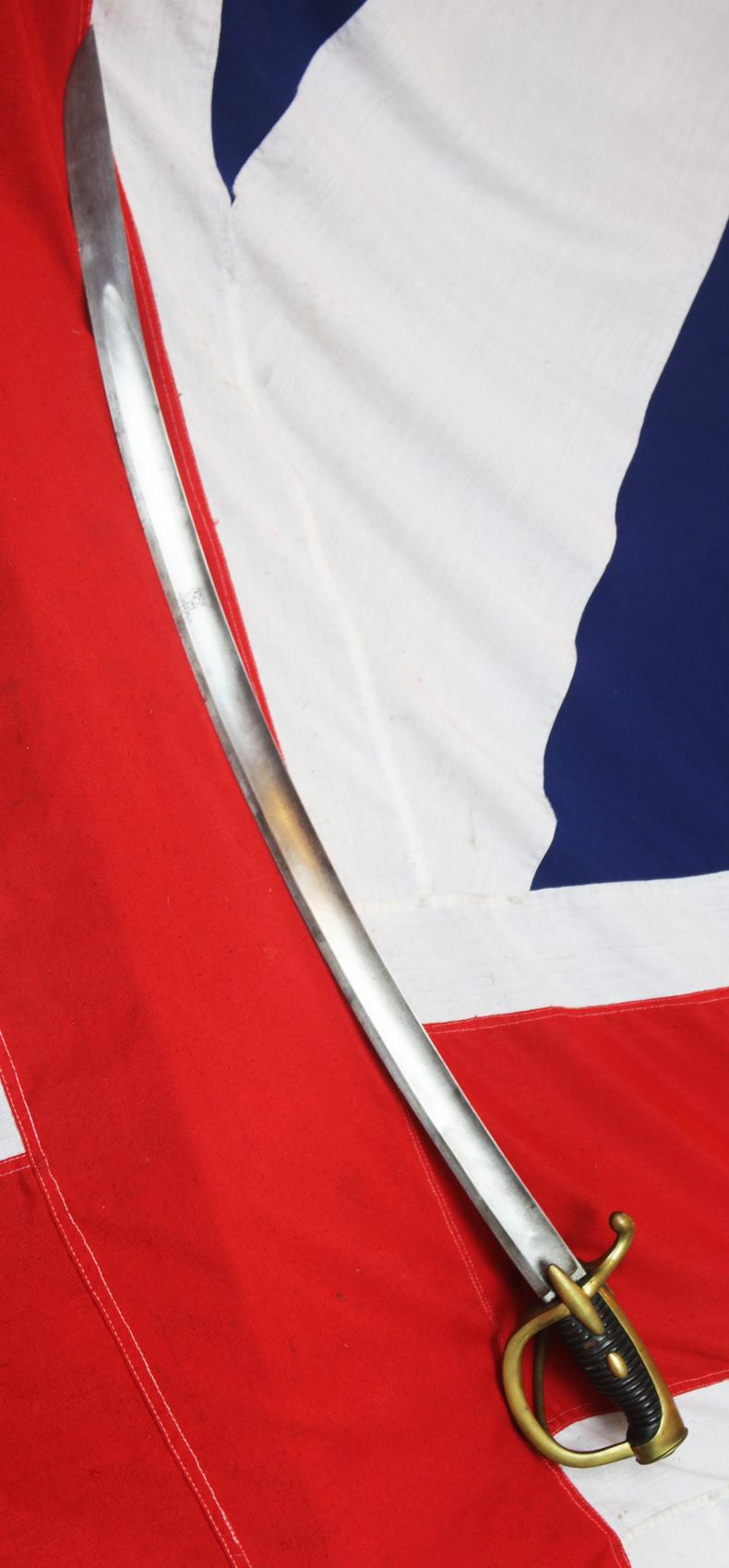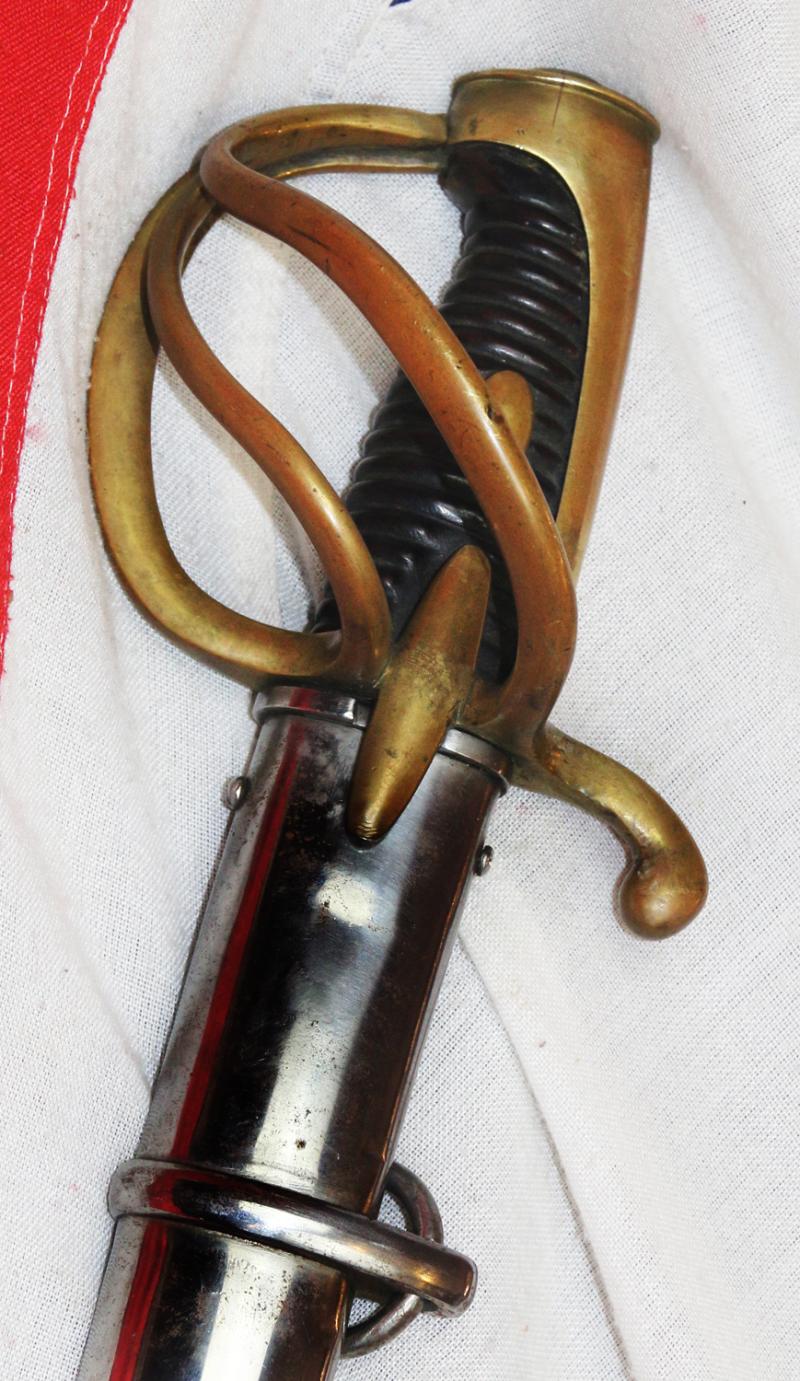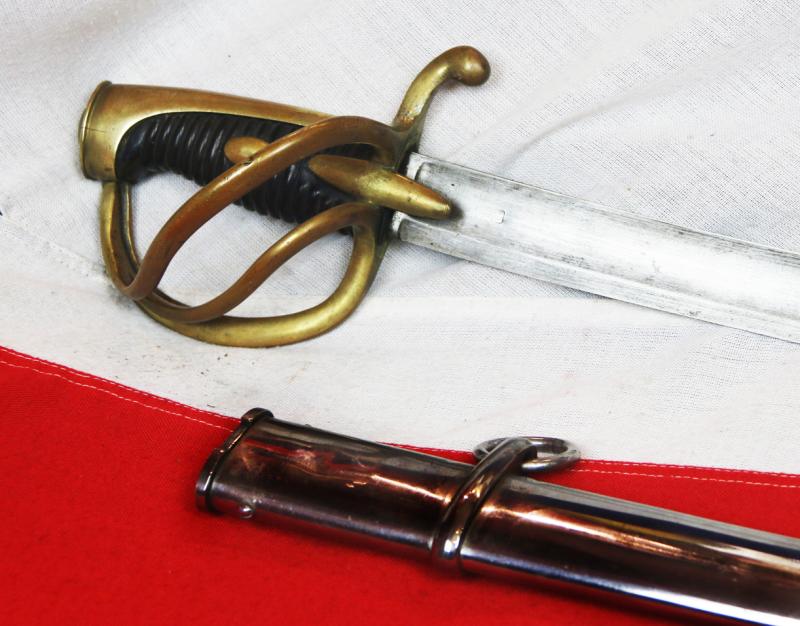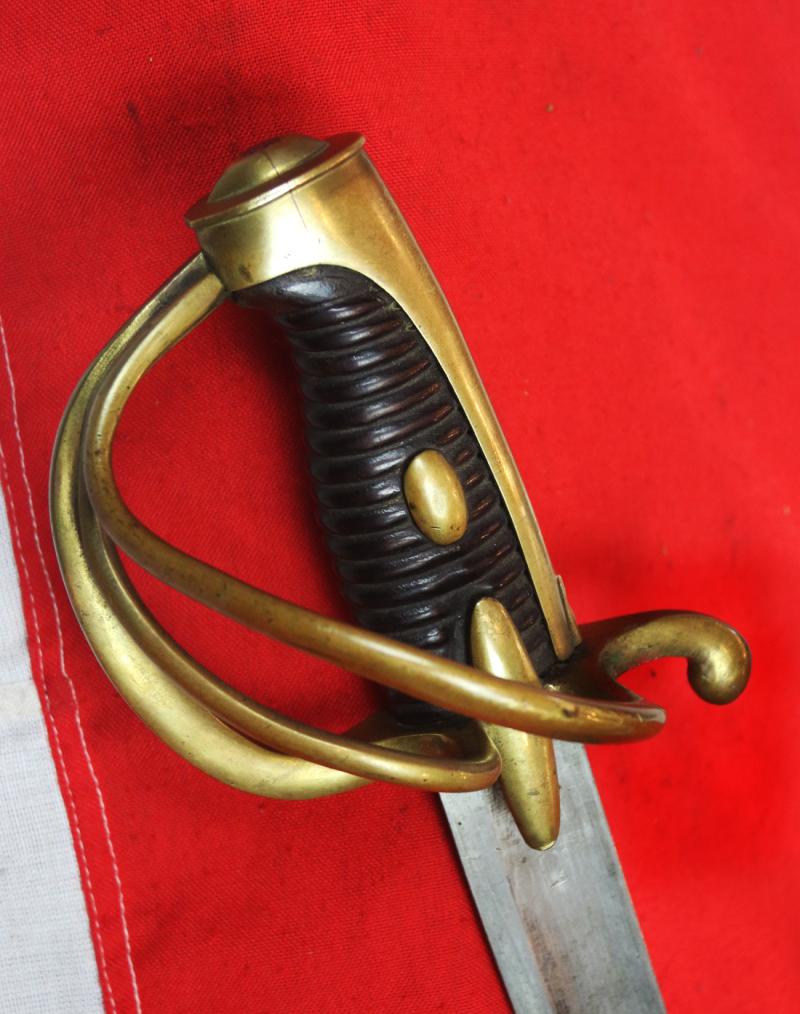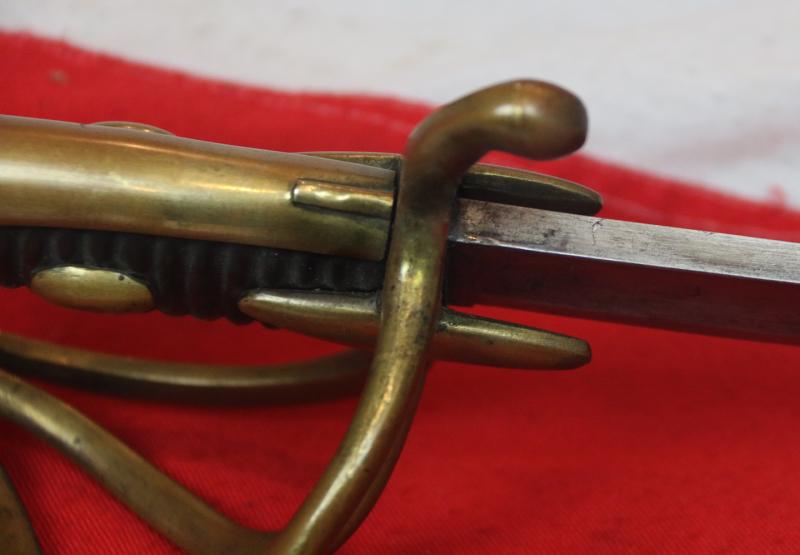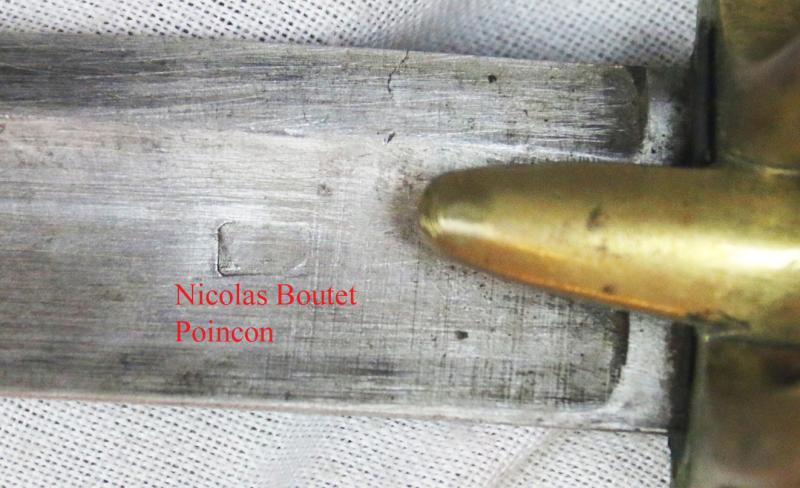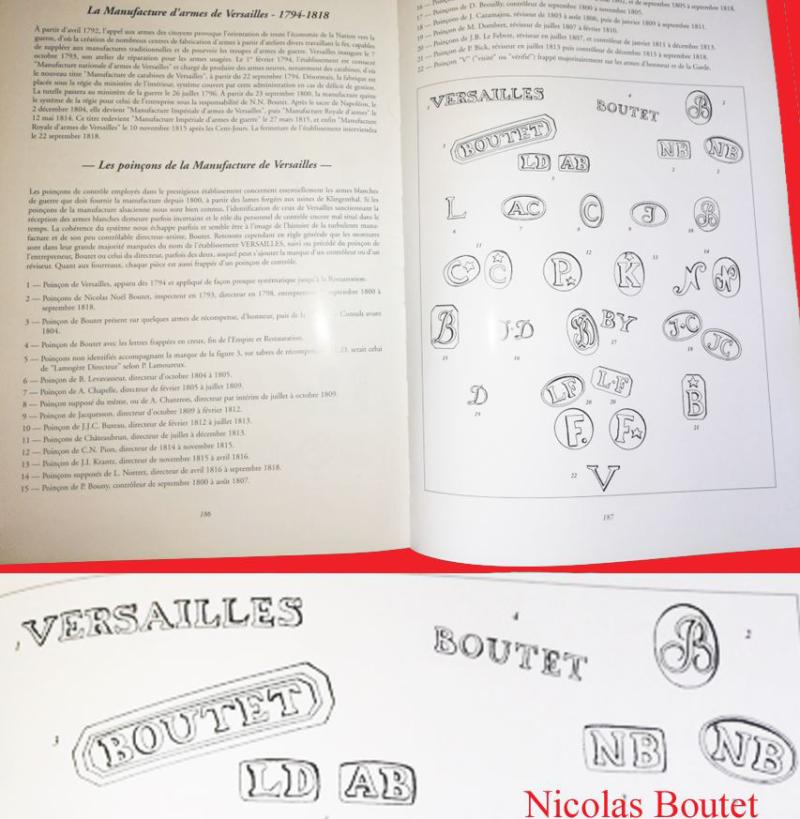A French 1st Empire Year XI French Light Cavalry Sabre by Nicolas Noel Boutet of the Imperial Workshop At Versailles Circa 1805. Early Napoleonic Grande Armee Period
1805 circa Napoleonic sabre from the period of the Grande Armee. Curved, single-and-false-edged blade with wide fuller, brass hilt with three bar guard and long narrow langets; leather-covered grip. Heavy grade sheet iron scabbard with two suspension rings. Traces of Boutet’s maker's- director’s poincon mark within a lozenge form on the blade face near the ricasso. Plain blade back strap, the month and date of manufacture were only added as inscriptions after an imperial decree of 29 April 1810. There are no other inspection marks remaining as they were often removed if the sword was captured as war booty, and became in the possession of a foreign combatant, as many swords of this pattern were absorbed into their own armies, such as, for example, the Russian cavalry. The Russians actually created their own near identical version in 1827.
Bright polished, heavy grade sheet iron, likely associated scabbard, with traditional Napoleonic brass seam.
Nicolas-Noël Boutet (31 August 1761 – 1833) was a French gunsmith and bladesmith who was director of the Versailles state arms factory. More than 600,000 weapons were produced under his directorship.
Boutet was born in Paris, the son of the royal gunsmith Noël Boutet, and became his father's assistant. In 1788, he married Leonie-Emilie Desainte, the daughter of his father's colleague, which gave him an even better position at court and the title of "gunmaker-in-ordinary" to King Louis XVI of France.
During the revolution he worked for Napoleon as director of the state arms manufactory.
He died in Paris
Grande Armée (French for 'The Great Army'; was the main military component of the French Imperial Army commanded by Emperor Napoleon Bonaparte during the Napoleonic Wars. From 1804 to 1808, it won a series of military victories that allowed the French Empire to exercise unprecedented control over most of Europe. Widely acknowledged to be one of the greatest fighting forces ever assembled, it suffered enormous losses during the disastrous Peninsular War followed by the invasion of Russia in 1812, after which it never recovered its strategic superiority and ended in total defeat for Napoleonic France by the Peace of Paris in 1815.
The Grande Armée was formed in 1804 from the L'Armée des côtes de l'Océan (Army of the Ocean Coasts), a force of over 100,000 men that Napoleon had assembled for the proposed invasion of Britain. Napoleon later deployed the army in Central Europe to eliminate the combined threat of Austria and Russia, which were part of the Third Coalition formed against France. Thereafter, the Grande Armée was the principal military force deployed in the campaigns of 1806/7, the French invasion of Spain, and in the War of the Fifth Coalition, where the French army slowly lost its veteran soldiers, strength and prestige, and in the conflicts of 1812, 1813–14, and 1815. In practice, however, the term Grande Armée is used in English to refer to all the multinational forces gathered by Napoleon in his campaigns
Code: 25248


